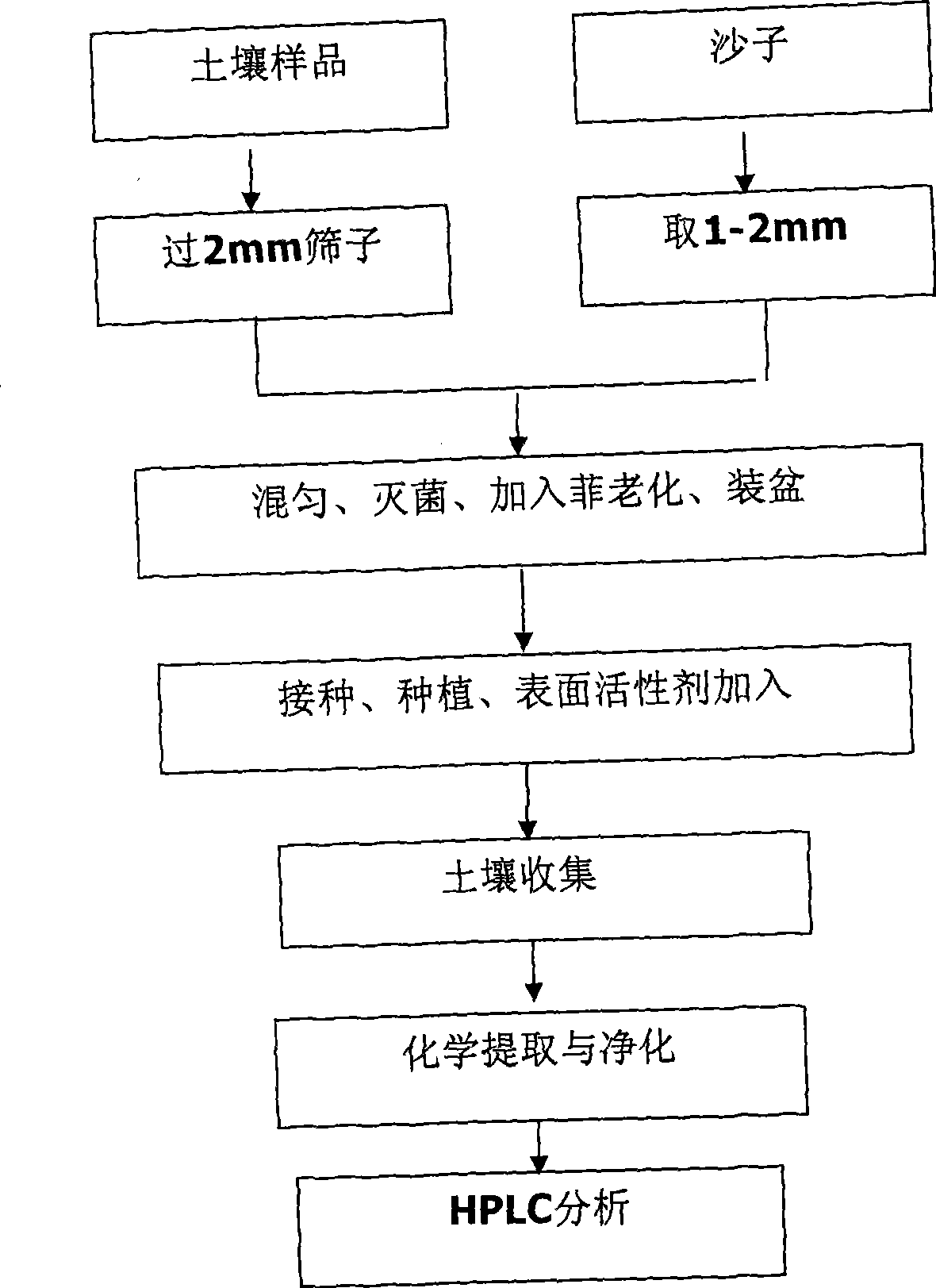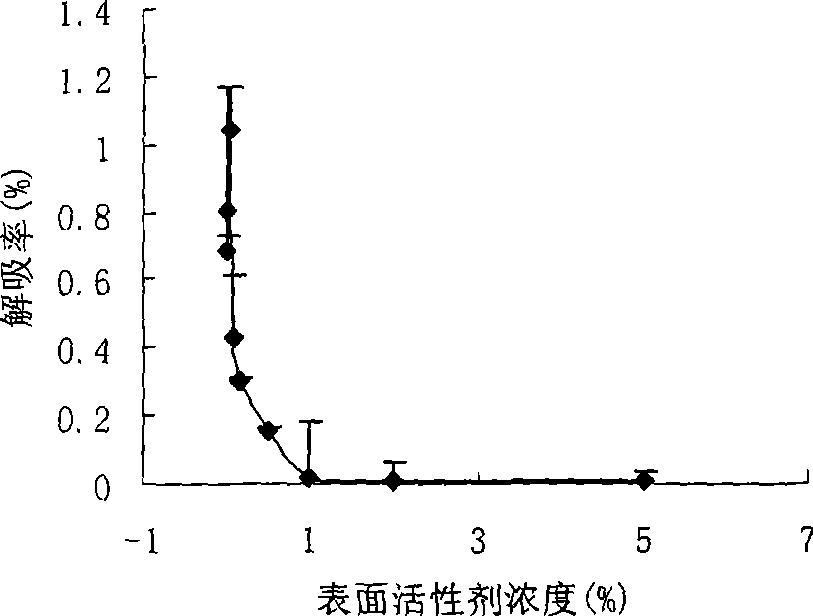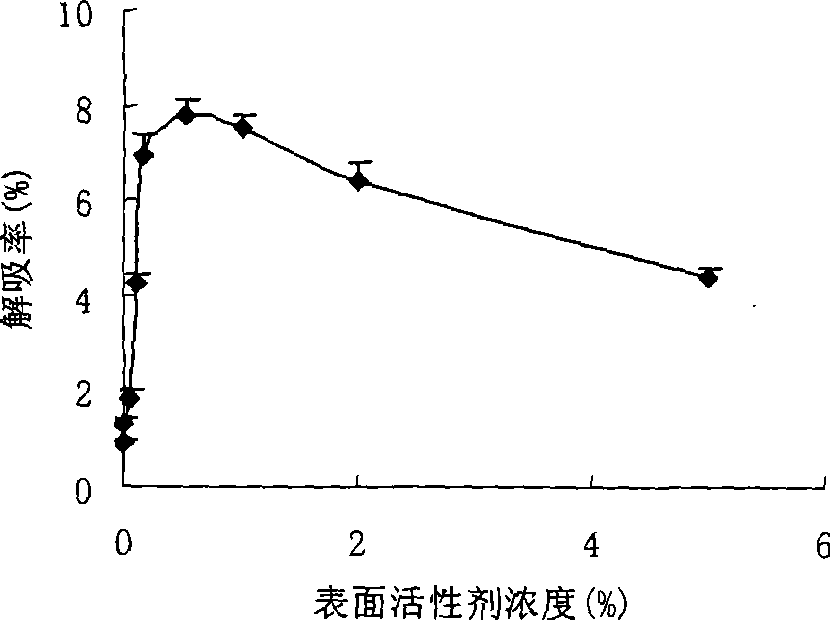Phenanthrene pollutant soil repair method using biosurfactant and bacteriorhiza
A surfactant, a technology for polluted soil, applied in the field of polluted ecological restoration, can solve problems such as affecting the efficiency of soil restoration
- Summary
- Abstract
- Description
- Claims
- Application Information
AI Technical Summary
Problems solved by technology
Method used
Image
Examples
Embodiment Construction
[0028] In the following, the present invention will be described in further detail in combination with specific embodiments.
[0029] Weigh 1g of phenanthrene and treat it as 5mgkg -1 And the air-dried soil samples aged for two months were placed in centrifuge tubes, and surfactant solutions of different concentrations were added, fully shaken at room temperature for 48 hours, then centrifuged, and the supernatant was accurately drawn, and analyzed by high performance liquid chromatography. Determination. The results showed that the optimal concentrations of Triton X-100 and rhamnopyranosoctanoside were 0.5% and 0.05% respectively (see Figure 2 for the results).
[0030] According to the determined optimal surfactant concentration, desorption kinetic experiments at the optimal concentration were carried out. Weigh 1g of phenanthrene and treat it as 5mgkg -1 And the air-dried soil samples aged for two months were placed in centrifuge tubes, 0.5% and 0.05% Triton X-100 and rh...
PUM
 Login to View More
Login to View More Abstract
Description
Claims
Application Information
 Login to View More
Login to View More - R&D
- Intellectual Property
- Life Sciences
- Materials
- Tech Scout
- Unparalleled Data Quality
- Higher Quality Content
- 60% Fewer Hallucinations
Browse by: Latest US Patents, China's latest patents, Technical Efficacy Thesaurus, Application Domain, Technology Topic, Popular Technical Reports.
© 2025 PatSnap. All rights reserved.Legal|Privacy policy|Modern Slavery Act Transparency Statement|Sitemap|About US| Contact US: help@patsnap.com



